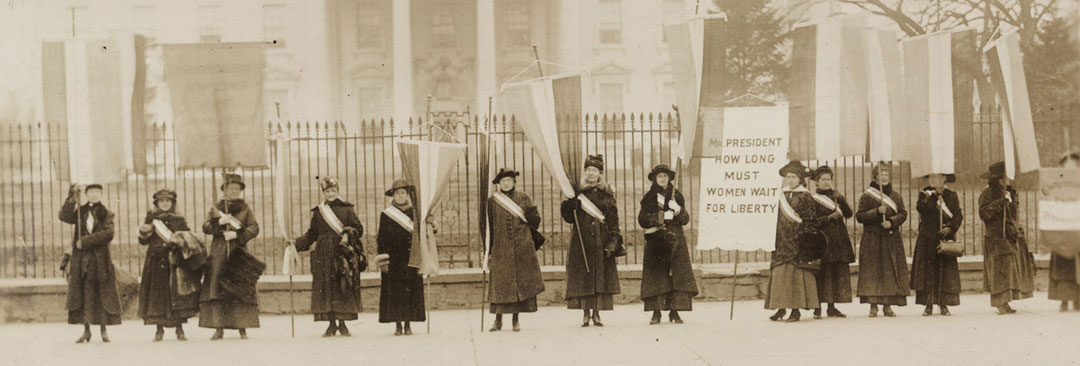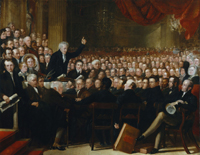 SUFFRAGE, ABOLITION AND THE TEMPERANCE MOVEMENT
SUFFRAGE, ABOLITION AND THE TEMPERANCE MOVEMENT
In 1840, Lucretia Mott, a Philadelphia Quaker, and Elizabeth Cady Stanton, an active abolitionist, met at the first World’s Antislavery Convention in London. The two women became fast friends, and soon began planning a convention dedicated to the discussion of women’s rights.
At that time, few women participated actively in public affairs, and even fewer were public speakers. This was changing rapidly, however, and Elizabeth Cady Stanton gave her first public speech, on the subject of the temperance movement, to a woman’s group in Seneca Falls in 1841.
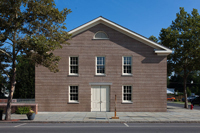 SENECA FALLS CONVENTION OF 1848
SENECA FALLS CONVENTION OF 1848
The Seneca Falls Convention, held July 19-20, 1848, was the first convention held in the Western world for the express purpose of discussing women’s rights and their role in society.
Derided at the time as ” the most shocking and unnatural incident ever recorded in the history of womanity”, the convention met in the Wesleyan Methodist Church, the only venue willing to accept such a controversial gathering. A total of 100 out of 300 attendees signed a document known as the Declaration of Rights and Sentiments, primarily drafted by Elizabeth Cady Stanton.
The Declaration was modeled on the U.S. Declaration of Independence, and addressed the civil, social, political, and religious rights of women. In particular, and most divisive, was the right to vote.
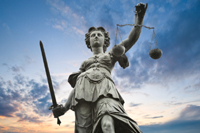 WOMEN’S SUFFRAGE AND THE 15TH AMENDMENT
WOMEN’S SUFFRAGE AND THE 15TH AMENDMENT
Following the Civil War, the women’s suffrage movement split into two factions over the question of whether to support the 15th Amendment, which gave the vote to African-American males but not to women.
The National Woman Suffrage Association (NWSA), an organization made up primarily of women, was founded by Susan B. Anthony and Elizabeth Cady Stanton. It opposed passage of the Fifteenth Amendment unless it was changed to guarantee to women the right to vote.
The American Woman Suffrage Association (AWSA), which had both men and women in its membership, was founded by Lucy Stone and Julia Ward Howe. It supported the proposed Fifteenth Amendment as written, believing that it was a first step toward extending voting rights to women.
When the Fifteenth Amendment was ratified on February 3, 1870, both organizations turned their attention to obtaining the franchise for women as well. However, both societal opposition to changing feminine roles and friction created by the NWSA opposition to the Fifteenth Amendment stymied efforts for further progress.
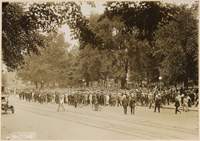 OPPOSITION TO WOMEN’S SUFFRAGE
OPPOSITION TO WOMEN’S SUFFRAGE
Women’s sufferage was opposed strenuously by a number of influential groups, in addition to those simply protecting the status quo.
First, sufferage was opposed by many traditionally-minded women such as members of the National Association Opposed to Woman Suffrage (NAOWS). These women felt that women’s influence was most effective when exercised indirectly, and believed their role in the domestic sphere was essential to an orderly society.
Second, the women’s sufferage movement was badly impacted by the opposition of one of its factions toward the ratification of the Fifteenth Amendment. Although that opposition was based on the premise that the Amendment did not go far enough, the backlash still affected women’s campaign for the vote.
Third, white male voters in the South opposed the enfranchisement of women out of concern that black women’s votes would be utilized to their detriment.
Finally, the early alliance of suffragists with the temperance movement and the support of the suffrage movement by temperance societies such as the Women’s Christian Temperance Union caused many male voters to see the two objectives as one and the same.
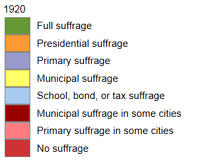
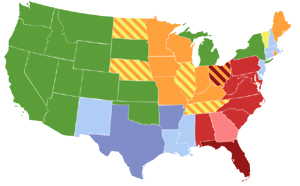 THE SUFFRAGE MOVEMENT AT THE STATE LEVEL
THE SUFFRAGE MOVEMENT AT THE STATE LEVEL
In 1887, after nearly 20 years of friction, Lucy Stone proposed a merger of the competing NWSA and AWSA. The end result, in 1890, was a combined organization known as the National American Woman Suffrage Association (NAWSA).
This revitalized the organization, led by Susan B. Anthony until 1894 and thereafter by her designated successor, Carrie Catt. For most of its remaining history, the NAWSA focussed on obtaining women’s suffrage at the state level.
The movement was highly successful in the western states. California granted women the right to vote in 1911; Nevada followed suit in 1914. However, the eastern seaboard (except for New York) and most of the central United States remained opposed.
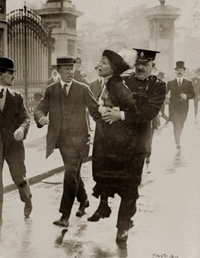 RESURGENCE OF THE SUFFRAGE MOVEMENT AT THE NATIONAL LEVEL
RESURGENCE OF THE SUFFRAGE MOVEMENT AT THE NATIONAL LEVEL
In 1909, two young women named Alice Paul and Lucy Burns returned from a sojourn in England where they had met while participating in militant protests supporting women’s right to vote in that country. Both had been involved in marches and demonstrations, hunger strikes and physical violence, and were passionate about their cause.
Both initially joined the NAWSA, where Paul became Chairwoman of their Congressional Committee in Washington, DC. She organized a highly successful march there the day before President Wilson’s inauguration, and under her leadership membership in the NAWSA grew. However, she clashed with NAWSA leadership over the potential for a Constitutional amendment giving women the vote. In 1913 she and Lucy Burns formed a national organization that, by 1917, became known as the National Woman’s Party (NWP).
The NWP led a series of demonstrations in the months following, culminating in multiple arrests and attempted mental commitments for the primary participants. On November 15, 1917, known afterwards as the Night of Terror, a group of protestors including Paul were jailed and severely beaten. The attendant press coverage kept pressure on the White House, and in January 1918 President Wilson announced his support for immediate passage of the 19th Amendment.
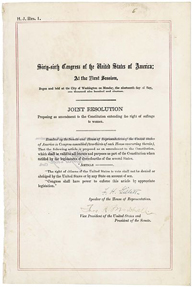 19TH AMENDMENT TO THE UNITED STATES CONSTITUTION
19TH AMENDMENT TO THE UNITED STATES CONSTITUTION
World War One ended on November 11, 1918. Citing the value of women’s efforts during the war, President Wilson convened a special session of Congress in May 1919 to address passage of the 19th Amendment. It passed both houses of Congress in June 1919, and was ultimately ratified by the final necessary state, Tennessee, in August 1920.
FURTHER READING AND OTHER REFERENCES
“Iron Jawed Angels”, HBO, 2004, Hilary Swank as Alice Paul
“One Woman, One Vote”, PBS Home Video, 2005, Susan Sarandon narrator
“Not for Ourselves Alone – The Story of Elizabeth Cady Stanton & Susan B. Anthony”, PBS DVD Gold, 1999, Ken Burns Director
Temperance Movement
History of Woman Suffrage, Volume I by Anthony, Gage, and Stanton
(Posted December 2013)
